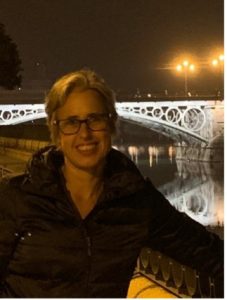Abstract: Computer vision is a field that includes methods for acquiring, processing, analyzing, and understanding high-dimensional data from (sequences of) images of the real world in order to produce numerical or symbolic information. Topology is a mathematical branch that concerns about the properties of a space that are preserved under continuous deformations. Algebraic topology, established on abstract algebra, studies these topological invariants, which may be as simple as integers but endowed with algebraic structures such as, for example, homology groups. Persistent homology provides a framework and efficient algorithms to encode the evolution of the homology of a space at different spatial resolutions building a bridge that connects algebraic topology with applications.
This project is mainly a continuation of the currently active project MTM2012-32706: Algebraic Topology for Combinatorial Image Analysis, in which we investigated tools (methods) for combinatorial image analysis that build on the theory of (persistent-) homology and cohomology.
Our proposal is built up around 4 research lines:
– Research line 1: Multi-functional topological approach for computer vision applications.
Our previous work on gait recognition has been successfully adapted to gait-based gender classification, gait-based carried object detection, abandoned object detection and monitoring human activities at distance. Having these results as a starting point, we plan to develop a theoretical-founded unified framework to handle multiple computer vision applications. Generally speaking, there are three main steps to get a topological representation (persistence diagram): (Step 1) constructing the simplicial complex K from the sample data in a way that the constructed shape could be meaningful. (Step 2) build different filtrations to explore the “true” geometry and topology of the continuous object sampled as K. (Step 3) computing persistent homology.
– Research line 2: Well-composed complexes and applications.
Our goal here is to extend and consolidate the previous results made by our team related to well-composed polyhedral complexes. Now, there is a need to create a robust and efficient computational framework for the implementation of the developed model as well as searching for appropriate applications in which our approach is a useful tool, such as 3D computer-aided design (CAD) modeling and recent 3D printing.
– Research line 3: LBP and irregular graph pyramids.
Local Binary Patterns (LBP) is a powerful tool used nowadays in pattern recognition. Given a 2D grayscale image I, our LBP approach aims to obtain a simplified image which can be seen as a “minimal» representation in terms of topological characterization of I.
– Research line 4: Spatiotemporal barcodes.
Our general aim is to compute the “spatiotemporal» persistent-homology information (of any dimension) of a spatiotemporal filtration, taking into account that it is not possible to move backwards in time (what is not obvious if we use the known algorithms for computing persistent homology).
Early research of these themes is currently carried out by our group and our collaborators form different countries (Cuba, China, Ireland, France and Austria). The project will facilitate intensified interactions and crossfertilization, which we predict will lead to new results and entire new research directions as well as, in a near future, to commercial applications in industry.
Source of Funding: MTM2015-67072-P
Implied entities: Universidad de Sevilla
iMAT research line: ⊕ RL2. Modeling of Biological Systems and Health
Researchers:

 PI:
PI: 